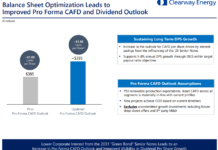by Tess Olsen-Rong
Following a landmark green bond growth year in 2013, the labelled green bond market has once again experienced a year of incredible growth in 2014: by year-end there had been $36.6bn of green bonds issued by 73 different issuers – that’s more than a tripling of the market! The final figure was boosted by a late flurry of green municipal bonds.

This exponential growth takes the total amount of green bonds outstanding to $53.2bn by the end of 2014.
So, what happened to cause this tripling of issuance? Well, corporate and municipal bond issuers joined the green party – big time – while development banks continued to be the backbone of green bond issuance. Let’s go through them each in a bit more detail.

Development banks continue to dominate green bond issuance, led by the EIB
True to form the big development banks still account for the majority of issuance with 44% ($16bn) of total green bond issuance in 2014. This is split amongst new green bond issuers and the veterans (EIB, EBRD, World Bank and IFC).

New entrants to the market were mainly national development banks that had been waiting in the wings for the right moment to issue a green bond. These include banks such as Germany’s KfW, France’s AFD and Netherland’s NWB Bank.
In addition to new issuers, we saw a diversification in product types with the World Bank issuing a series of retail investor focused green bonds, as well green bonds across 6 different currencies. EIB continued to be a prolific issuer of green bonds (although they call them Climate Awareness bonds) and ended the year on top of the issuer table, across all issuer types, with $5.6bn green bonds issued in 2014.
Overall top 10 green bond issuers of the year (by amount issued in USD):

First green asset-backed securities brought to market by Toyota
A new type of green bonds also came to the market; Toyota (TM) kicked the year off with a bang with a $1.75bn green asset-backed bond in Q1. This bond showcased how proceeds from a bond backed by car leases and loans can be earmarked for future green vehicles.
Green corporate bond issuance was the biggest catalyst for the market explosion
Green corporate “earmarked” bonds helped create depth in the green market. Not only did the corporates bring scale, accounting for $12bn issuance, but they also offered a range of currencies -both great for liquidity in the market.
The largest corporate deal of the year was GDF Suez’s $3.4bn green bond (split into a EUR 1.2bn and EUR 1.3bn tranches) with proceeds going towards renewable energy and energy efficiency projects.
As the corporate green bond market matured, we also saw a move down the ratings with NRG Yield (NYLD) (rated Bb1 by Moodys) and Abengoa’s (ABGB) Greenfield SA subsidiary (rated B by S&P) bringing high yield green bonds to the market in Q3.

Banks leveraged their green loan portfolios to ramp up green bond issuance to US$1.2bn
For example, Credit Agricole CIB used their green loan book to back $478m green retail bonds for Japanese investors over the year. This is great, as banks play a crucial role in the capital pipeline by providing loans and project financing to green issuers and projects.
After a successful inaugural bond, NRW, the German regional bank, chose to get a second opinion on its next offering, which proved its green credentials. NAB (National Australia Bank) took it a step further with its inaugural green bond having certification against the Climate Bond Standard.
US municipal green bonds drove the muni market share of green bond issuance to 12%
Green city bonds became popular mid-year with issuances from the Swedish City of Gothenburg and South Africa’s City of Johannesburg. Gothenburg was a trailblazing green city issuer with repeated green issues through the year, while Jo’burg was the first to show how green bonds can work for emerging market issuers.
We also had other types of municipal issuers: In the first two quarters of 2014, Ile de France brought EUR 850m ($1.3bn) of green bonds to market. But it was first in the second half of 2014 when the green municipal market really started to heat up with Ontario and 11 different US States bringing a wide range of green bonds to market.

Ending the year on a high
Not to be missed: A bunch of unlabelled project and ABS bonds funding green assets
Now, Bloomberg New Energy Finance’s 2014 green bond total is $38bn but it includes unlabelled ABS or project bonds. If we include CBI’s list of project bonds, which total $2.5bn in 2014, to our green labelled figure we make it $39bn! Amazingly close to our $40bn prediction for 2014.
This difference in the end total is likely to be around how we carve up the numbers. CBI uses the Bloomberg announcement date for inclusion in the 2014 figures.
Here are the top 5 unlabelled project and ABS bonds with proceeds for green from 2014:

So, that’s 2014 done…on to 2015! This year we are expecting the same level of market growth in order to get $100bn green bond issuance by December 31st 2015. Let’s get started then!
Notes on the figures:
- Currency exchange
rates are taken from the last price on the date of issuance. - Some issuances fall on the cusp of the year in which case we use the announcement date as recorded on Bloomberg to determine its quarter.
- Additional taps of bonds are included dependent on tap announcement date
- $36.6bn is the labelled green bond total – this means that the issuer has self-labelled the bond as green in a public statement or bond document.
Tess Olsen-Rong is a market analyst at the Climate Bonds Initiative, an “investor-focused” not-for-profit promoting long-term debt models to fund a rapid, global transition to a low-carbon economy. Sean Kidney and Beate Sonerud also contributed to this post.








